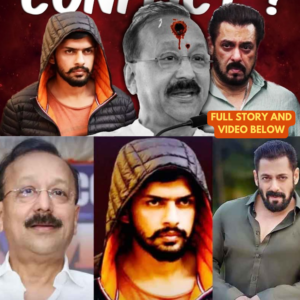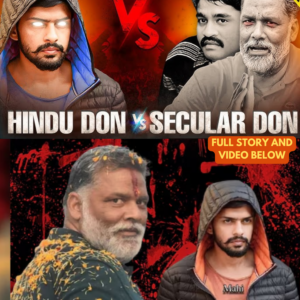How does Lawrence Bishnoi operate his gang from Tihar? Is Lawrence a hero or a villain? Know the full truth.
.
.
.
FULL VIDEO
Lawrence Bishnoi, a name that has become synonymous with crime in India, has garnered a surprising amount of fame, particularly on social media. Despite being a convicted criminal with a long history of violent offenses, many young people view him as a hero. This paradox raises intriguing questions about his persona and the impact of public perception on criminal figures.
Life in Tihar Jail
Bishnoi’s time in Tihar Jail has been marked by a unique blend of compliance and manipulation. Reports suggest that he is well-behaved and cooperative with prison authorities, which has contributed to a somewhat sanitized image of his character. His ability to maintain a low profile while navigating the complexities of prison life has only fueled speculation about his continued influence outside the jail walls.
Criminal Operations from Behind Bars
There are persistent allegations that Bishnoi continues to orchestrate gang activities from within Tihar. High-profile criminals often have networks that allow them to communicate and operate even while incarcerated. These claims raise concerns about the effectiveness of prison security and oversight.
Media and Insider Information
The media plays a significant role in shaping public perceptions of criminals like Bishnoi. Reports often stem from insider information, primarily from police sources or fellow inmates. This network of informants complicates the narrative, as it blurs the lines between news and sensationalism.
Privileges and Controversies
Bishnoi’s case has also highlighted the controversial privileges afforded to certain inmates. Special permissions for medical treatments or other needs raise questions about fairness in the prison system. Critics argue that such privileges are indicative of a system that favors high-profile individuals, thereby undermining the integrity of the justice system.
Conclusion
Lawrence Bishnoi embodies the complexities of modern crime and public perception. While he is undoubtedly a villain in the eyes of law enforcement and victims, the admiration he receives from some segments of society paints a more nuanced picture. As discussions around criminal justice and rehabilitation evolve, the case of Bishnoi remains a poignant reminder of the multifaceted nature of crime and its portrayal in society.
News
Amitabh Bachchan behaved badly with his daughter-in-law Aishwarya Rai | Amitabh IGNORE Aishwarya Rai
In recent weeks, a wave of speculation has emerged suggesting that all may not be well between former Miss World Aishwarya Rai and the iconic Bachchan family. This speculation has captured the attention of fans and the media, as rumors…
Amitabh gave a message to daughter-in-law Aishwarya Rai, said “No matter how your house is, it is yours”
Amitabh Bachchan, the iconic figure of Indian cinema, has a longstanding tradition of engaging with his audience through social media. He often shares reflections on his life, career, and personal philosophies. Recently, a particular post of his has stirred significant…
Salman Khan vs Lawrence Bishnoi | Why it is Happening? |
Salman Khan vs Lawrence Bishnoi | Why it is Happening? | The tension between Bollywood superstar Salman Khan and gangster Lawrence Bishnoi has become a hot topic in recent news. This clash is not just a simple feud; it embodies…
Lawrence Bishnoi Vs Pappu Yadav | Bishnoi Targets Anti-India Mafia?
In the ever-evolving landscape of India’s criminal underworld, a new chapter is unfolding, marked by the dramatic confrontation between notorious gangster Lawrence Bishnoi and the infamous Bihar don, Pappu Yadav. This rivalry has escalated recently, with Bishnoi’s gang issuing a…
LAWRENCE BISHNOI VS SALMAN KHAN, PAKISTANI PUBLIC REACTION AFTER NADEEM KHAN VIRAL VIDEO, REAL TV
The recent controversy involving Bollywood superstar Salman Khan and Lawrence Bishnoi has sparked intense discussions across communities, especially concerning allegations of animal cruelty. The speaker, representing a particular community, emphasizes that if there is evidence that Khan has harmed a…
LAWRENCE BISHNOI’S DIWALI GIFT TO PAPU YADAV LIVE, AFTER NADEEM KHAN & SALMAN KHAN, LATEST NEWS
In a recent live discussion, significant attention was drawn to the ongoing tensions surrounding Pappu Yadav and Lawrence Bishnoi, especially in light of recent developments involving prominent figures like Nadeem Khan and Salman Khan. The speaker began by addressing the…
End of content
No more pages to load











